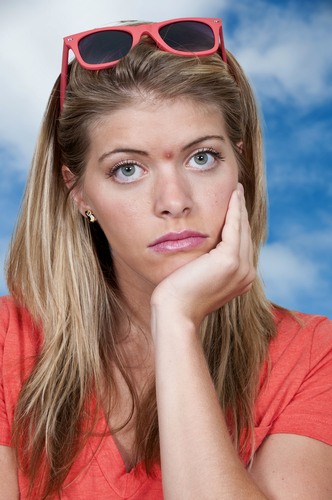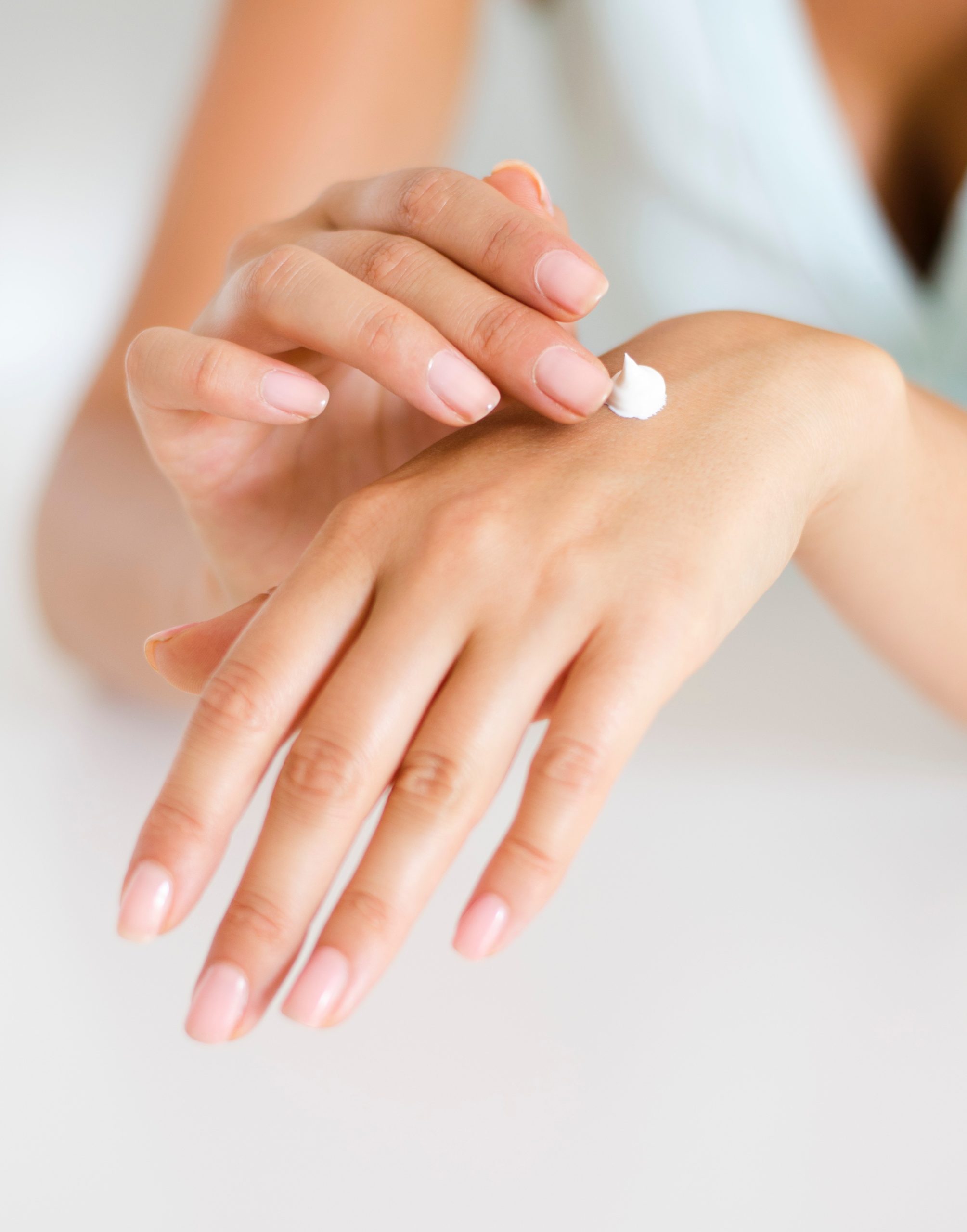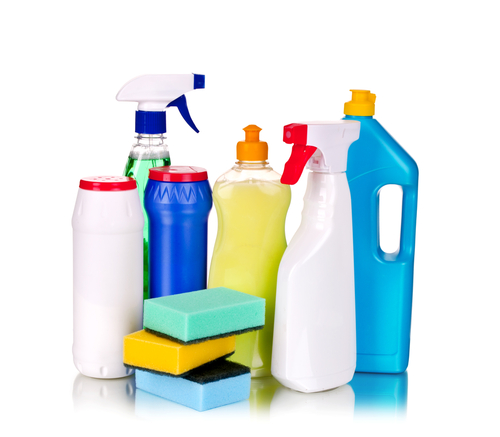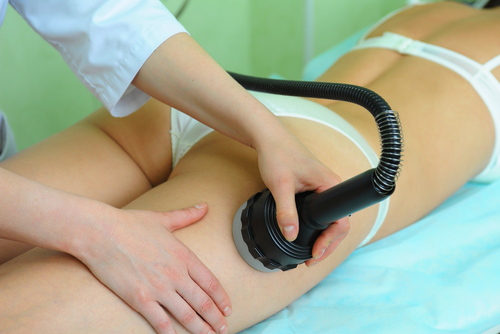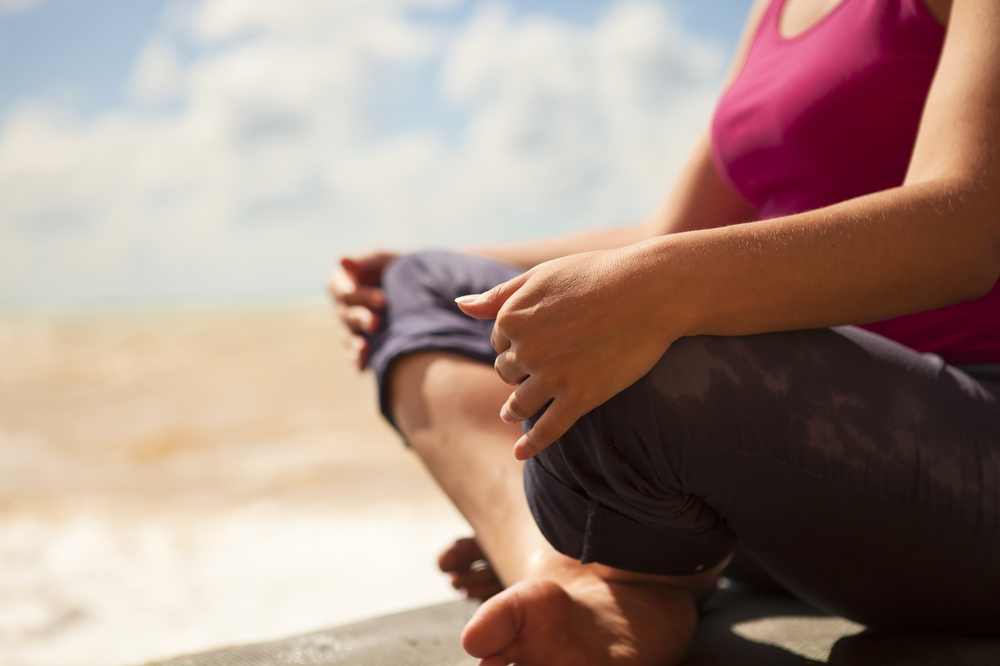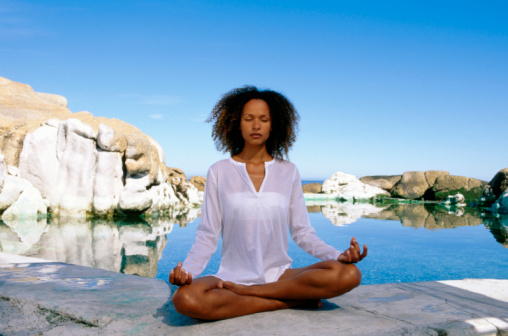7 Alternative Medicine Treatments for Animals: A Short Guide for Caring for Your Pet Naturally (Lisa Taylor)
7 Alternative Medicine Treatments for Animals: A Short Guide for Caring for Your Pet Naturally (Lisa Taylor)
Kenzo had been paralyzed in all four legs for two weeks.
He wasn’t eating, slept only on his side and he never even tried to get up. Prescription medications had no effect.
His owners were on a mission to find a solution, and that’s when they found Dr. Valérie Trudel’s acupuncture and osteopathy clinic. When Kenzo arrived at the clinic, he seemed to be in pain.
Dr. Trudel’s first instinct was to prepare his owners for the possibility of euthanasia. Obviously, that’s not a reality any pet owner wants to face, so they made up their mind to try everything they could. They knew the journey ahead would be long.
Dr. Trudel performed acupuncture on Kenzo and his owners decided to wait a full 24-hours before making a snap judgement about the results.
Kenzo arrived lying on his side. After the first treatment, he left lying on his stomach. Dr. Trudel saw him again two weeks later; he was walking.
Alternative medicine specialists can recount many stories like this one.
“I want people to know that euthanasia is not the only solution,” explains Dr. Trudel. “When medicine or surgery are not an option, or there is advice against them, it is really worth the effort to try an alternative medicine. There are of course, many animals that are not euthanized because we have otherwise treated them.”
Are you looking for a solution for helping your pet?
Would you like to try the most natural treatments possible but are confused by all the options? This short guide is for you.
Like you, many pet owners have found that traditional medicine is either not enough or too harsh on their pets. Like you, these owners consider their pet like a member of the family, and they will do everything in their power to give them the best care and, in the worst-case scenario, avoid euthanasia.
Animals quickly become part of the family. They fill an essential emotional need; we establish a real relationship with them. They remind us of our connection to nature and bring us back to what is essential.
What can touch your heart more than genuine concern from our dog when you’re feeling sad? What is more heartwarming than a cat nuzzling up to you after you’ve had a long day.
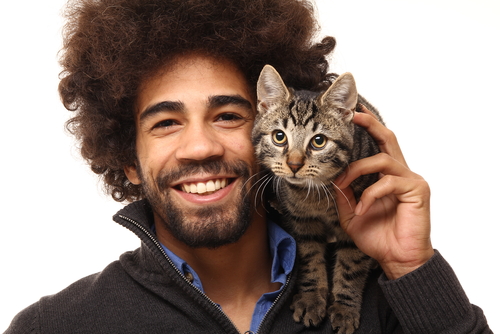
Animals force us to stop and enjoy the moment.
Recent surveys* show that the United States has over 310 million pets of all sorts, most of these being dogs, cats and fish. More than 44% of households own a dog and more than 35% own a cat.
Traditional veterinary medicine has made spectacular advances in the past few years and remains essential to the well-being of our companions. However, this is also the case for the different alternative medicines.
THE ADVANTAGES AND LIMITS OF ALTERNATIVE MEDICINE
Dr. Hélène Haltrecht, a holistic veterinarian and professor in the Faculty of Veterinary Medicine at the University of Montréal, practices at the Centre DMV in Montréal. She defines herself as a veterinarian specialized in COMPLEMENTARY medicines. All so-called alternative medicines can indeed be truly compatible and helpful, even if your pet is also treated with traditional medicine.
The main advantage of alternative medicines is that they can treat a number of ailments in a natural way without chemicals that could have adverse side effects.
Before you start any kind of treatment, be aware that the web is full of all kinds of information. It is important to consult with professionals who can direct you towards the right treatments.
Also keep in mind that, in more serious situations, your pet may need additional tests (blood tests, CT scans, ultrasound, etc.) or surgical procedures, which remain the specialty of veterinary medicine.
Alternative medicines are very effective for treating certain chronic illnesses, but in the case of an emergency, you should always consult a professional veterinarian. Furthermore, certain illnesses (like a serious heart condition) require medication.
In all cases, alternative and western medicines be completely beneficial when used together! A natural treatment can often be administered in addition to a medication (always under the advice and supervision of a professional). Natural approaches can also often improve the efficacy of a drug therapy.
ALTERNATIVE MEDICINE: A HOLISTIC APPROACH TO NATURAL WELLNESS
Alternative (or complementary) medicine is characterized by two things, whatever the specialty:
♥ Its holistic approach
♥ Its natural approach
This holistic approach is what we call holistic therapy, i.e. taking into account the whole (or totality) of the individual in order to treat them.
The idea behind this approach is to understand the weaknesses in order to prevent issues instead of curing them.
Non-conventional, alternative, natural and holistic medicines (the terms are not lacking) are not only concerned with the physical aspects of your pet, but also its emotions and experiences, which can have a major impact on its physical health.
Cécile Jean, doctor of veterinary medicine, practices osteopathy, acupuncture and phytotherapy in France.
“Practicing holistic medicine consists of understanding the patient as a whole. Care through alternative medicines such as osteopathy, phytotherapy and acupuncture enable this approach, which is ultimately very complementary to the allopathic medicine traditionally practiced,” she explains. “Like most holistic medicines, the objective so little used in the western world, is not to care for an illness, but to avoid the individual falling ill… it would be even more logical that a doctor or a veterinarian be paid to keep their patient in good health.”
This is confirmed by Hélène Haltrecht, already mentioned above.
“I aim for a comprehensive approach. According to the case, I look at what medicinal treatment or what combination would be the most appropriate for treating the animal. For example, acupuncture combines well with herbal remedies, especially for chronic problems (like neurological problems, herniated discs, paralysis, etc.) which are often difficult to treat with traditional medicines. Some animals do not respond well, or well enough, to medications. At this point, surgery is often required, but this is sometimes too costly for the client or perhaps they want to try to avoid surgery altogether.”
Alternative medicine offers other options, or at least complementary options, to traditional care.
“I always offer all of the options that I think could be beneficial to the animal. This can also include medications. If I think that surgery might be a good option, I will recommend it as well.”
Dr. Anne-Marie Potrawiak, a holistic veterinarian, practices at the Animomedic Clinic in Montréal. She considers her practice in osteopathy, acupuncture, homeopathy and phytotherapy to be an integrative medicine, meaning a holistic approach that treats the animal using different types of alternative medicines.
Many veterinarians now offer a combination of traditional medicine and alternative natural treatments, with fewer side effects.
Perhaps you are asking yourself, what can you treat with natural medicines? Most doctors and therapists agreed that the most frequent problems they encounter in animals are problems of chronic pain: herniated discs, osteoarthritis, older animals who don’t move as well, skin conditions, colitis, allergies, etc.
Would you like to treat your animal in the most natural way possible? We will now take a quick look at the different natural approaches available to you in order to help you make your therapeutic choices.
1. Phytotherapy for Animals
I have dealt with phobia / aggression problems in dogs through the combination of acupuncture and phytotherapy and exchanges with the pet’s owner,” says Dr. Jean.

Plants to treat your pet? Is this even possible? Yes!
The use of plants to care for humans AND animals is not new. For millennia, humans have cared for their animals with plants.
Phytotherapy is the use of medicinal plants in various forms for the therapeutic benefits of their chemical components.
Animals living in the wild have a tendency to eat the plants that they find in fields, forests or groves in order to heal (in an instinctive way) some of their particular ailments. It is by observing wild animals that the medicinal properties of certain plants have been discovered.
Phytotherapy can be useful for strengthening the immune system, detoxifying the body, treating stress and anxiety, supplementing a proper diet in order to strengthen the body, or regulating the specific activities of certain systems or organs.
It should also be noted that, when used in combination, several plants can have synergistic effects that can influence an animal’s health in the long-term. In short, phytotherapy can be used preventatively in order to promote the overall health of an animal.
In this field, Chinese medicine uses herbs in combination with other treatments. This enables a reduction in the use of chemical medications (even replacing them) and therefore greatly reduces the harmful side-effects.
“I will often recommend Chinese herbs in combination with my other treatments. With that, we can give less medication, or it can even replace the drugs. Therefore, we have fewer side-effects,” explains Dr. Haltrecht.
Remember that a plant can be safe for a human but not for an animal and vice versa, so be careful about giving your pet a phytotherapy treatment you have taken. The metabolisms of animals and humans are different. Always consult a professional before starting treatment. Furthermore, as is often the case with alternative medicines, the therapies are meant to span from mid-to-long term.
If you choose phytotherapy for your pet, make sure to always choose reliable, proven professionals and suppliers.
2. Acupuncture for Animals
Phytotherapy is often practiced in association with acupuncture. More familiar to the general public, this ancestral therapy is very well received by animals, contrary to what one might think.
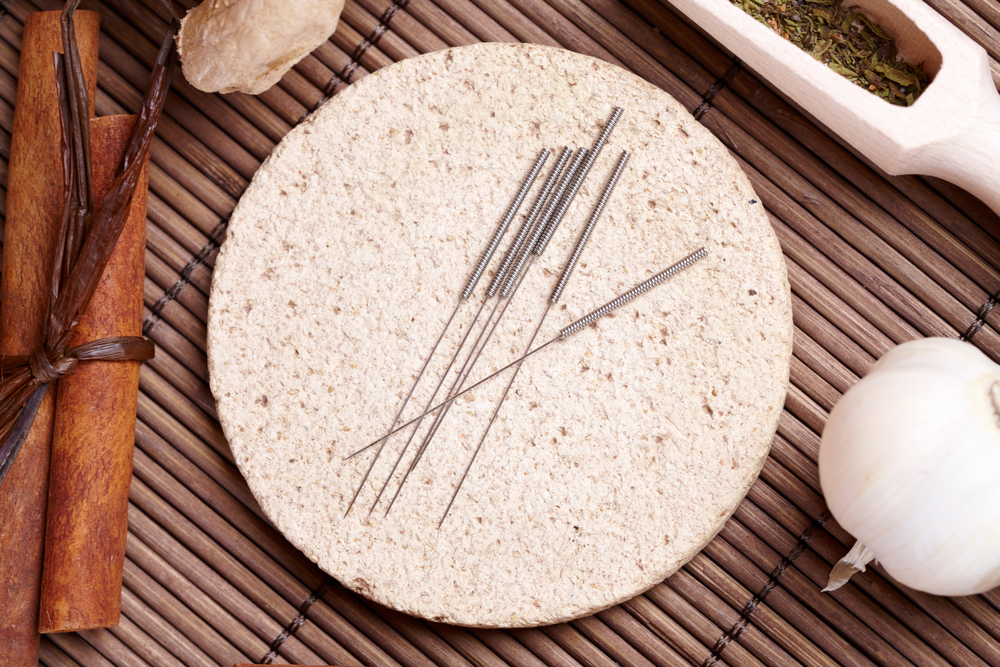
“Acupuncture is one of five branches of Traditional Chinese Medicine (TCM),” explains Dr. Jean. “It is a medicine that has been established empirically over the course of centuries (more than 5000 years of existence!) and whose founding principle is the harmonious circulation of energy (or Qi) in the body. TCM is based on the idea that effective treatment can only be achieved by addressing the pathology and the patient in a comprehensive way. Disease is therefore, according to the Chinese, both the expression of a problem involving the organ to which it is linked and also the sign of a more general imbalance within the body. Or, even more widely, of the patient with his ecosystem (owner, other animals, habitat).”
“Acupuncture is a medicine in its own right, and can therefore be appropriate in almost all situations. However, there are situations where its therapeutic advantages stand out: dermatology, osteoarticular pathology, behavior, geriatrics, weak organs (kidney, liver, etc.). TCM, along with all holistic medicines, allows a comprehensive look at the patient, whatever it might be, and does not stop at the symptoms. It is therefore very useful in many pathologies”.
There are more than 300 acupuncture points recognized in animals and each provokes a specific reaction in the body. We use needling, heat, lasers, electric current and sometimes injections to treat the animal. Acupuncture allows the healing and regenerative mechanisms of the body to function to their full potential. It also stimulates certain nervous reflexes, which in turn stimulate certain organs. Like many alternative medicines, acupuncture offers a holistic approach, working with the animal according to its personality and experience.
Another benefit of acupuncture, as stated by Dr. Trudel, is often to treat the cases where the owners do not have the means to pay for surgery. Cases of ruptured cruciate ligaments or paralysis are great examples where acupuncture has shown great results. These surgeries, to name but a few, cost anywhere between USD 1,500 and USD 4,000. Even if the owners have the means to pay, the consequences of surgery may be as restrictive as the problem itself. Acupuncture allows a natural treatment and avoids many undesirable side-effects. It also proves very useful as relief for aging animals, allowing them to see out their final days without suffering due to lack of energy, joint pain, or stiffness.
3. Physiotherapy for Animals
Dr. Olivia Lannou is a physiotherapist at the clinic PhysioVetCare in France and recounts that “Coben had triggered a polyradiculoneuropathy, an autoimmune inflammatory disease of the peripheral nervous system, which led to a generalized flaccid paralysis. When he first came to PhysioVetCare, it had been almost three months since he could walk, he could barely hold his head up and was extremely amyotrophic. After one month of rehabilitation, neurological and muscular, and a lot of motivation, the results have met our expectations!”

“As a result of a cervical hernia, and despite the surgery, Canelle was paralyzed in all four limbs. Thanks to physiotherapy, her motivation and the perseverance of her owners, after two months of work, we have the joy of seeing her walking around again!”
She has many stories like these to tell! She and her team have seen animals arrive unable to walk into the clinic who are now fine.
Physiotherapy is now one of the alternative medicines which is developing more and more in veterinary clinics, in addition to other more traditional treatments. It is particularly noted for cases of neurological or orthopedic disorders.
Physiotherapy encompasses manual and instrumental techniques to diagnose and treat functional disorders and injuries. Physiotherapists use techniques such as massage and stretching as well as ultrasounds, electrotherapy, or hydrotherapy, etc. If your pet seems to have a neurological or orthopedic problem, physiotherapy could help.
The first objective is to ease the pain with various natural treatments and physical manipulations. The next goal is to help the animal regain its fitness. This is done a gentle way with manipulation by hand, or using natural elements like water, vibrations, heating/cooling or light.
Physiotherapy can also be combined with other natural treatments like homeopathy or phytotherapy to preserve the long-term health of the animal.
Physiotherapy will be noted in the case of arthritic animals or older animals who can no longer undergo an operation.
In the case of more serious orthopedic problems, surgery can sometimes be necessary. However, physiotherapy will often be used in addition to the surgery, or in post-operative treatment to allow the animal to recover as quickly as possible.
In fact, physiotherapy and functional rehabilitation are equivalent to the care given by kinesiologists in sports medicine. It is particularly interesting to use in post-surgical rehabilitation (orthopedic or neurologic), in rehabilitation of degenerative processes (osteoarthritis, degenerative myopathy, cauda equina syndrome, etc.), or in the preparation of sports dogs (specific pathologies of sports dogs, prevention of injuries, specific training program) as explained by Dr. Olivia Lannou, therapist at PhysioVetCare.
Physiotherapy is based on the use of passive kinesiotherapy (joint mobilization), active kinesiotherapy (exercises for stimulating balance, proprioception or targeted muscle building), electrotherapy, ultrasounds, hydrotherapy (walking in water which enables important muscular movement without putting weight on the joints) and therapeutic laser.
4. Homeopathy for Animals
Dr. Potrawiak is interested, like all specialists in homeopathy, in all aspects of the animal before administering any sort of treatment.
Homeopathy treats, in effect, the individual and not the disease in taking a holistic approach. In homeopath, providers are interested in the animal as a whole and not only in symptoms. It is what we call the law of individualization. Homeopathy is as concerned with the psychological as the physical aspects of the individual. This includes their experiences (trauma or otherwise) and hereditary traits as well. It paints a unique picture of your pet and proposes a treatment that takes all of these things into consideration. Homeopath differentiates itself from traditional medicine, which treats symptoms separately instead of considering the body as a whole.

How does the treatment work?
Homeopathy for animals (dogs, cats, horses, rabbits… Source: homeoanimal.com) consists of treating animals by means of remedies in small doses obtained by dilution. These remedies, in higher doses, are capable of producing similar symptoms in man (or in animal) to those of the disease, in order for the body to fight back.
The goal is to stimulate the body’s ability to heal itself (vitality). Homeopathic remedies aim to stimulate this vitality to help the body fight against disease.
The homeopath seeks to understand how symptoms manifest and also considers what aggravates them, what calms them, and at what times the symptoms appear. They take all of this into account in order to find a suitable homeopathic formula. Two animals suffering from the same problem could therefore be prescribed different homeopathic formulas.
This natural approach can be a good alternative to medications, particularly in cases of digestive disorders, psychological problems like anxiety, or hormonal imbalances to name but a few examples. Homeopathy helps limit many side-effects that you may see with drug treatments. It is also completely possible to use homeopathy in addition to conventional treatments.
Most animals react very well to homeopathic treatments. Many physical or psychological health problems can be treated with this approach, which has been used in Europe for a very long time and is becoming increasingly popular in North America.
5. Aromatherapy for Animals
Dr. Nelly Grosjean, doctor in naturopathy and author of the book Veterinarian Aromatherapy, explains in an interview, “Aromatherapy is used particularly against ailments like coughs, digestive problems or alopecia, and is very effective antiseptically speaking (for fighting against bacteria, parasites, fungi, etc.). I strongly recommend it for the treatment of tendinitis, itching, joint pain, digestion, or even for strengthening the immune system or helping the animal recover after excessive physical exertion (for example racehorses).”
Aromatherapy is the process of using aromatic plant extracts (essences and essential oils) for therapeutic purposes, unlike phytotherapy which uses all the elements of a plant.
However, be aware that some animals can be allergic or sensitive to certain essential oils. You should never use essential oils for the therapeutic care of your pet without the advice of a specialist in aromatherapy. Furthermore, they will sometimes advise you to try it on a small area of the body before using a treatment. The specialist will also let you know if certain oils should be avoided at particular moments in your pet’s life (pregnancy, lactation, etc.).
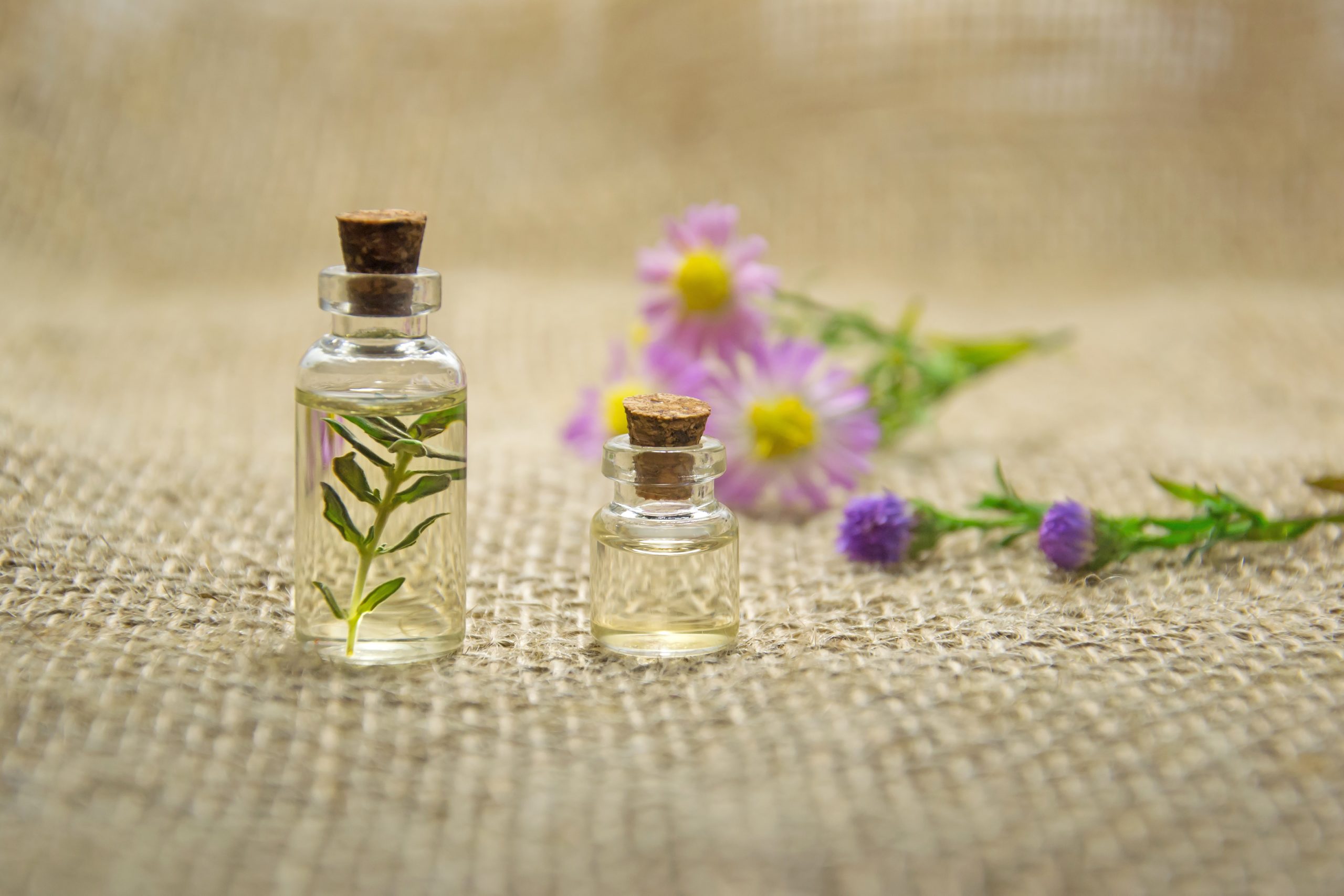
What is an essential oil? Essential oils are a concentration of active ingredients derived from the distillation of an aromatic plant. Aromatherapy can not properly be called a ‘soft medicine’, because in fact, essential oils are a real package of energy! Oils used in aromatherapy must be of excellent quality and taken from healthy plants. Always check that the bottle indicates the exact name of the plant and its place of distillation.
Essential oils can be used for antiseptic, antimicrobial and anti-infectious purposes such as detoxifying, revitalizing or regulating the nervous system or hormonal glands. They increase resistance to illness, improve immune defenses and prevent infections and contagions. They can be used in prevention or in curative treatment in three different forms: diffusion into the air, through friction, or by internal absorption. Obviously, only healthcare professionals will be able to recommend which oils are suitable for your pet and how they should be used.
“My aromatic compositions have helped and continue to help the studs of the princes of England, the studs of a Jordanian princess, veterinary biotherapy clinics and equine osteopaths and dentists,” says Dr. Grosjean… Enough to convince the most skeptical amongst us, is it not?
6. Osteopathy For Animals
Osteopathy is an alternative medicine which uses manual techniques and, like other natural medicines, is based on the principle that the body is an entity and that it is the patient (the animal) who is treated instead of the disease.
Osteopathy attaches a great importance to the vascular system and the self-healing power of the individual. It starts from the principle that all bodily systems interact with each other. In being able to treat all kinds of conditions, osteopathy often allows us to avoid taking medications. By focusing on the cause of the illness and not just the symptoms, osteopathy enables treatment of the problem at the source in order to avoid its recurrence. Knowing that certain health conditions require traditional medical interventions, osteopathy can be used in addition to other procedures.
“By regularly consulting an Osteopath, you allow your pet’s body to manage the disturbances which occur at a low level before the symptoms manifest (…),” explains Dr. Jean.
Osteopathy is also very complementary to acupuncture, as Dr. Trudel explains.
“It is rare that I treat only with acupuncture, given that the medicines are very close to each other in nature and are complementary. By combining the two approaches, I have treated, for example, a dog who had suffered with limping for several months and had been seen by several specialists. In two sessions, his problem was solved. It was a cervical vertebra that was stuck and which had pressed on the nerve. Another cat was limping on its back leg and was unable to put weight on it. Its owner was on the verge of euthanizing it. Three treatments later, the cat was walking.”
7. Naturopathy for Animals
Naturopathy is also based on a holistic approach to illness and considers the body and the individual as a whole rather than only treating the health problem itself.
Animal naturopathy is concerned with the physiological needs of the animal as well as its well-being and comfort. A naturopath will often propose an overall health check of the animal while considering its diet, experiences and mental health before proposing any treatment. They will then propose the use of plants, flowers, aromatic essences, homeopathic remedies or trace elements to treat the animal. In all cases, the approach will be entirely natural.
The principal interest of naturopathy is its 100% natural approach. You will be certain, in consulting with a good animal naturopath, of providing your pet with non-invasive and completely natural care. The naturopath is a specialist in various natural medicines. They can propose different approaches for you to choose from (aromatherapy, homeopathy, etc.). The naturopath will consider all aspects of your pet’s life.
Like any alternative medicine, in specific urgent cases or in the case of certain disabling diseases, naturopathy cannot replace traditional treatments. However, it can work complementary to traditional treatments and may even improve their effectiveness.
As you can see, in terms of alternative medicine, there is no shortage of choices! From phytotherapy to osteopathy and covering naturopathy, physiotherapy, homeopathy, aromatherapy and acupuncture, you can find the natural approach that suits the personality and health needs of your pet.
All the experts we interviewed have told us the same thing: all these approaches are often linked to one another. This is why in your research you will find that many therapists are both osteopaths and acupuncturists, or naturopaths and homeopaths. In short, these complementary medicines each have their strengths and can act on different levels, and sometimes also in parallel with more traditional treatments.
Each case is unique and must be studied as such in order to find the best suited therapy. However, each case can be treated as naturally as is possible, if that is your wish for your most loyal companion.

“I treated a 10-year-old dog with osteoarthritis and an acute posterior limp, pain and associated tremors,” says Dr. Jean. “Well, classical medicine, and even osteopathy associated with phytotherapy did not seem to relieve it. On the other hand, after two close sessions of acupuncture, the limp disappeared (without any other associated treatment). It may not be obvious and, in some cases, we do not find in the first instance the care that is appropriate for the animal and its problem at that time, but when we do, the effectiveness can really be very impressive! There are also animals treated with oncology and, in some cases, we obtain remission with the combination of acupuncture or phytotherapy.”
We all want the best for our pets and, if possible, to avoid chemical drug treatments and the undesirable side-effects that come with them. This is a beautiful gift that we can give them!
Dr. Trudel ends with this advice, “Consult your veterinarian before starting an alternative treatment.” Why? “A lady called me for her three-month-old Bernese mountain dog who had a limp in its hind leg. However, it turned out that the dog did not need acupuncture or osteopathy. It had, in fact, had a broken heel for one month.” In cases like this, only traditional veterinary medicine will be able to help your pet, then alternative care can be used to complete the treatment. So always be alert to the signs observed in your pet.
We’d love it if you could share your personal experiences in alternative medicine with us and our readers! Your story can help others make more informed decisions as they learn more about the benefits and limitations of natural approaches.
Also, feel free to send us any questions you may have. There is nothing like talking to other animal lovers!
We invite you to share your experiences, comments, questions and references in the section below. Thank you very much! Your contribution to the discussion will make a difference!
Source: American Pet Products Association's 2015-2016 National Pet Owners Survey
